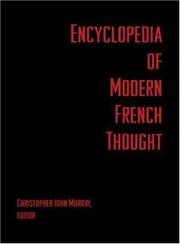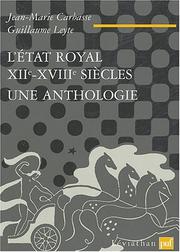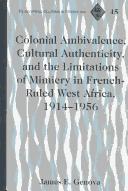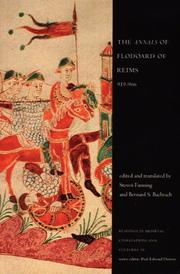| Listing 1 - 10 of 74 | << page >> |
Sort by
|
Book
Abstract | Keywords | Export | Availability | Bookmark
 Loading...
Loading...Choose an application
- Reference Manager
- EndNote
- RefWorks (Direct export to RefWorks)
Book
Year: 2004 Publisher: Böhlau
Abstract | Keywords | Export | Availability | Bookmark
 Loading...
Loading...Choose an application
- Reference Manager
- EndNote
- RefWorks (Direct export to RefWorks)
Prince Eugene of Savoy, contemporary and companion in arms of the first Duke of Marlborough, was the architectural patron of two of the most important buildings of the Viennese baroque, viz. the Stadtpalais (city mansion) and the Belvedere, a suburban garden palace. In spite of the common patron, so far the two buildings were considered quite separately by the research on the Viennese baroque, presumably because of the emphasis on the two different, very prominent architects, Johann Bernhard Fischer von Erlach and Johann Lucas von Hildebrandt.In the unified view presented in the present work, attention is focussed not only on the architecture but also on the sequences of rooms, on their interior decoration, and - in the case of the Belvedere - on the conceptual relationship between garden and buildings. Starting point is the question: "What was the self-representation intended by the Prince, who had not been raised in the Habsburg monarchy but at the French court?" The investigation of the origins of the various elements of the interior decoration and of the messages going with their provenance was helped by the fortunate circumstance that not only are the buildings well preserved but that, through the contemporary engravings and drawings of Salomon Kleiner, we are well informed on the original interiors of the buildings. Together with newly discovered written sources, this has allowed the complicated plannings, construction and decoration history of the two palaces to be clarified.The main results may be summarized as follows. Prince Eugene of Savoy wished to conform, on a high level, to the traditions and the style of the Viennese nobility but without foregoing the French achievements in living comfort and elegance he was acquainted with from his time at the French court. As his carrier progressed, this 'French component' was enhanced and made increasingly visible. Little prominence was given to the relationship of the Prince to the ruling house of Savoy, presumably because he wanted to leave no doubt that he owed his position as one of the leading military and political leaders of the time not to family connections but to his own achievements. Die beiden Wiener Bauten des Prinzen Eugen von Savoyen, das Stadtpalais in der Himmelpfortgasse und die Vorstadtanlage Belvedere, wurden bislang, ungeachtet des gemeinsamen Auftraggebers, nicht als Einheit behandelt. Dies dürfte an der künstlermonographisch dominierten Wahrnehmung dieser für den Wiener Barock sehr bedeutsamen Bauten als Werke der beiden prominenten Architekten, Johann Bernhard Fischer von Erlach und Johann Lukas von Hildebrandt, gelegen haben.Ausgangspunkt der gemeinsamen Betrachtung im vorliegenden Werk ist die Frage nach der vom Prinzen Eugen, der ja nicht in der Habsburger Monarchie aufgewachsen war, intendierten Selbstdarstellung. Zu ihrer Beantwortung werden die Raumfolgen, die Ausstattung der Räume und - für das Belvedere - der konzeptionelle Zusammenhang von Wohngebäuden und Garten gleichberechtigt mit der Architektur herangezogen. Dabei erwies es sich als Glücksfall, daß beide Anlagen sehr gut erhalten und insbesondere die zeitgenössisch überaus wichtige Innenausstattungen durch die Stiche und Stichvorzeichnungen des Augsburger Vedutenzeichners Salomon Kleiner gut dokumentiert sind. Die architekturikonologische Vorgehensweise, bei der die Herkunft der einzelnen Ausstattungselemente erforscht und die mit der Herkunft seinerzeit möglicherweise einhergehende Bedeutung untersucht wird, hat zu einer Fülle von neuen Erkenntnissen vor allem zur zeitgenössischen Wahrnehmung der Räume geführt und, zum Teil mit Hilfe bisher unbekannter Schriftquellen, die komplizierte und bislang nur unvollständig verstandene Bau- und Ausstattungsgeschichte der beiden Anlagen erhellt.Als übergeordnete Erkenntnis ergibt sich, daß sich Prinz Eugen auf hohem Niveau in die Wiener Gegebenheiten und Traditionen einordnete, dabei aber nicht auf die ihm aus seiner Pariser Jugendzeit vertrauten französischen Wohn- und Ausstattungserrungenschaften verzichtete. Die "französische Komponente" wurde im Laufe des Werdegangs des Prinzen zunehmend verstärkt und zunehmend nach außen getragen. Die Eigenständigkeit seiner politischen und militärischen Leistungen unterstrich der Prinz unter anderem dadurch, daß in seiner Repräsentation seine Zugehörigkeit zum regierenden Haus Savoyen nur eine untergeordnete Rolle spielte.
Palaces --- Architecture, Baroque --- Interior decoration in art. --- Prince Eugene of Savoy --- Viennese baroque --- Prinz Eugen --- Wiener Barock --- Eugen von Savoyen --- Frankreich --- Schloss Belvedere --- Stadtpalais --- Eugene, --- Fischer von Erlach, Johann Bernhard, --- Hildebrandt, Johann Lukas von, --- Homes and haunts --- Vienna (Austria) --- Buildings, structures, etc.
Book
Year: 2004 Publisher: Böhlau
Abstract | Keywords | Export | Availability | Bookmark
 Loading...
Loading...Choose an application
- Reference Manager
- EndNote
- RefWorks (Direct export to RefWorks)
Prince Eugene of Savoy, contemporary and companion in arms of the first Duke of Marlborough, was the architectural patron of two of the most important buildings of the Viennese baroque, viz. the Stadtpalais (city mansion) and the Belvedere, a suburban garden palace. In spite of the common patron, so far the two buildings were considered quite separately by the research on the Viennese baroque, presumably because of the emphasis on the two different, very prominent architects, Johann Bernhard Fischer von Erlach and Johann Lucas von Hildebrandt.In the unified view presented in the present work, attention is focussed not only on the architecture but also on the sequences of rooms, on their interior decoration, and - in the case of the Belvedere - on the conceptual relationship between garden and buildings. Starting point is the question: "What was the self-representation intended by the Prince, who had not been raised in the Habsburg monarchy but at the French court?" The investigation of the origins of the various elements of the interior decoration and of the messages going with their provenance was helped by the fortunate circumstance that not only are the buildings well preserved but that, through the contemporary engravings and drawings of Salomon Kleiner, we are well informed on the original interiors of the buildings. Together with newly discovered written sources, this has allowed the complicated plannings, construction and decoration history of the two palaces to be clarified.The main results may be summarized as follows. Prince Eugene of Savoy wished to conform, on a high level, to the traditions and the style of the Viennese nobility but without foregoing the French achievements in living comfort and elegance he was acquainted with from his time at the French court. As his carrier progressed, this 'French component' was enhanced and made increasingly visible. Little prominence was given to the relationship of the Prince to the ruling house of Savoy, presumably because he wanted to leave no doubt that he owed his position as one of the leading military and political leaders of the time not to family connections but to his own achievements. Die beiden Wiener Bauten des Prinzen Eugen von Savoyen, das Stadtpalais in der Himmelpfortgasse und die Vorstadtanlage Belvedere, wurden bislang, ungeachtet des gemeinsamen Auftraggebers, nicht als Einheit behandelt. Dies dürfte an der künstlermonographisch dominierten Wahrnehmung dieser für den Wiener Barock sehr bedeutsamen Bauten als Werke der beiden prominenten Architekten, Johann Bernhard Fischer von Erlach und Johann Lukas von Hildebrandt, gelegen haben.Ausgangspunkt der gemeinsamen Betrachtung im vorliegenden Werk ist die Frage nach der vom Prinzen Eugen, der ja nicht in der Habsburger Monarchie aufgewachsen war, intendierten Selbstdarstellung. Zu ihrer Beantwortung werden die Raumfolgen, die Ausstattung der Räume und - für das Belvedere - der konzeptionelle Zusammenhang von Wohngebäuden und Garten gleichberechtigt mit der Architektur herangezogen. Dabei erwies es sich als Glücksfall, daß beide Anlagen sehr gut erhalten und insbesondere die zeitgenössisch überaus wichtige Innenausstattungen durch die Stiche und Stichvorzeichnungen des Augsburger Vedutenzeichners Salomon Kleiner gut dokumentiert sind. Die architekturikonologische Vorgehensweise, bei der die Herkunft der einzelnen Ausstattungselemente erforscht und die mit der Herkunft seinerzeit möglicherweise einhergehende Bedeutung untersucht wird, hat zu einer Fülle von neuen Erkenntnissen vor allem zur zeitgenössischen Wahrnehmung der Räume geführt und, zum Teil mit Hilfe bisher unbekannter Schriftquellen, die komplizierte und bislang nur unvollständig verstandene Bau- und Ausstattungsgeschichte der beiden Anlagen erhellt.Als übergeordnete Erkenntnis ergibt sich, daß sich Prinz Eugen auf hohem Niveau in die Wiener Gegebenheiten und Traditionen einordnete, dabei aber nicht auf die ihm aus seiner Pariser Jugendzeit vertrauten französischen Wohn- und Ausstattungserrungenschaften verzichtete. Die "französische Komponente" wurde im Laufe des Werdegangs des Prinzen zunehmend verstärkt und zunehmend nach außen getragen. Die Eigenständigkeit seiner politischen und militärischen Leistungen unterstrich der Prinz unter anderem dadurch, daß in seiner Repräsentation seine Zugehörigkeit zum regierenden Haus Savoyen nur eine untergeordnete Rolle spielte.
Palaces --- Architecture, Baroque --- Interior decoration in art. --- Eugene, --- Fischer von Erlach, Johann Bernhard, --- Hildebrandt, Johann Lukas von, --- Homes and haunts --- Vienna (Austria) --- Buildings, structures, etc. --- Prince Eugene of Savoy --- Viennese baroque --- Prinz Eugen --- Wiener Barock --- Eugen von Savoyen --- Frankreich --- Schloss Belvedere --- Stadtpalais
Book
Year: 2004 Publisher: Böhlau
Abstract | Keywords | Export | Availability | Bookmark
 Loading...
Loading...Choose an application
- Reference Manager
- EndNote
- RefWorks (Direct export to RefWorks)
Prince Eugene of Savoy, contemporary and companion in arms of the first Duke of Marlborough, was the architectural patron of two of the most important buildings of the Viennese baroque, viz. the Stadtpalais (city mansion) and the Belvedere, a suburban garden palace. In spite of the common patron, so far the two buildings were considered quite separately by the research on the Viennese baroque, presumably because of the emphasis on the two different, very prominent architects, Johann Bernhard Fischer von Erlach and Johann Lucas von Hildebrandt.In the unified view presented in the present work, attention is focussed not only on the architecture but also on the sequences of rooms, on their interior decoration, and - in the case of the Belvedere - on the conceptual relationship between garden and buildings. Starting point is the question: "What was the self-representation intended by the Prince, who had not been raised in the Habsburg monarchy but at the French court?" The investigation of the origins of the various elements of the interior decoration and of the messages going with their provenance was helped by the fortunate circumstance that not only are the buildings well preserved but that, through the contemporary engravings and drawings of Salomon Kleiner, we are well informed on the original interiors of the buildings. Together with newly discovered written sources, this has allowed the complicated plannings, construction and decoration history of the two palaces to be clarified.The main results may be summarized as follows. Prince Eugene of Savoy wished to conform, on a high level, to the traditions and the style of the Viennese nobility but without foregoing the French achievements in living comfort and elegance he was acquainted with from his time at the French court. As his carrier progressed, this 'French component' was enhanced and made increasingly visible. Little prominence was given to the relationship of the Prince to the ruling house of Savoy, presumably because he wanted to leave no doubt that he owed his position as one of the leading military and political leaders of the time not to family connections but to his own achievements. Die beiden Wiener Bauten des Prinzen Eugen von Savoyen, das Stadtpalais in der Himmelpfortgasse und die Vorstadtanlage Belvedere, wurden bislang, ungeachtet des gemeinsamen Auftraggebers, nicht als Einheit behandelt. Dies dürfte an der künstlermonographisch dominierten Wahrnehmung dieser für den Wiener Barock sehr bedeutsamen Bauten als Werke der beiden prominenten Architekten, Johann Bernhard Fischer von Erlach und Johann Lukas von Hildebrandt, gelegen haben.Ausgangspunkt der gemeinsamen Betrachtung im vorliegenden Werk ist die Frage nach der vom Prinzen Eugen, der ja nicht in der Habsburger Monarchie aufgewachsen war, intendierten Selbstdarstellung. Zu ihrer Beantwortung werden die Raumfolgen, die Ausstattung der Räume und - für das Belvedere - der konzeptionelle Zusammenhang von Wohngebäuden und Garten gleichberechtigt mit der Architektur herangezogen. Dabei erwies es sich als Glücksfall, daß beide Anlagen sehr gut erhalten und insbesondere die zeitgenössisch überaus wichtige Innenausstattungen durch die Stiche und Stichvorzeichnungen des Augsburger Vedutenzeichners Salomon Kleiner gut dokumentiert sind. Die architekturikonologische Vorgehensweise, bei der die Herkunft der einzelnen Ausstattungselemente erforscht und die mit der Herkunft seinerzeit möglicherweise einhergehende Bedeutung untersucht wird, hat zu einer Fülle von neuen Erkenntnissen vor allem zur zeitgenössischen Wahrnehmung der Räume geführt und, zum Teil mit Hilfe bisher unbekannter Schriftquellen, die komplizierte und bislang nur unvollständig verstandene Bau- und Ausstattungsgeschichte der beiden Anlagen erhellt.Als übergeordnete Erkenntnis ergibt sich, daß sich Prinz Eugen auf hohem Niveau in die Wiener Gegebenheiten und Traditionen einordnete, dabei aber nicht auf die ihm aus seiner Pariser Jugendzeit vertrauten französischen Wohn- und Ausstattungserrungenschaften verzichtete. Die "französische Komponente" wurde im Laufe des Werdegangs des Prinzen zunehmend verstärkt und zunehmend nach außen getragen. Die Eigenständigkeit seiner politischen und militärischen Leistungen unterstrich der Prinz unter anderem dadurch, daß in seiner Repräsentation seine Zugehörigkeit zum regierenden Haus Savoyen nur eine untergeordnete Rolle spielte.
Palaces --- Architecture, Baroque --- Interior decoration in art. --- Eugene, --- Fischer von Erlach, Johann Bernhard, --- Hildebrandt, Johann Lukas von, --- Homes and haunts --- Vienna (Austria) --- Buildings, structures, etc. --- Prince Eugene of Savoy --- Viennese baroque --- Prinz Eugen --- Wiener Barock --- Eugen von Savoyen --- Frankreich --- Schloss Belvedere --- Stadtpalais

ISBN: 1579583849 Year: 2004 Publisher: New York ; London Fitzroy Dearborn
Abstract | Keywords | Export | Availability | Bookmark
 Loading...
Loading...Choose an application
- Reference Manager
- EndNote
- RefWorks (Direct export to RefWorks)
History of philosophy --- anno 1800-1999 --- France --- Intellectual life --- Biography --- Encyclopedias --- Civilization --- Vie intellectuelle --- Biographie --- Encyclopédies --- Civilisation --- Encyclopédies --- Pʻŭrangsŭ --- Frankrig --- Francja --- Frant︠s︡ii︠a︡ --- Prantsusmaa --- Francia (Republic) --- Tsarfat --- Tsorfat --- Franḳraykh --- Frankreich --- Fa-kuo --- Faguo --- Франция --- French Republic --- République française --- Peurancih --- Frankryk --- Franse Republiek --- Francland --- Frencisc Cynewīse --- فرنسا --- Faransā --- Franza --- Republica Franzesa --- Gallia (Republic) --- Hyãsia --- Phransiya --- Fransa --- Fransa Respublikası --- Franse --- Францыя --- Frantsyi︠a︡ --- Французская Рэспубліка --- Frantsuzskai︠a︡ Rėspublika --- Parancis --- Pransya --- Franis --- Francuska --- Republika Francuska --- Bro-C'hall --- Френска република --- Frenska republika --- França --- República Francesa --- Pransiya --- Republikang Pranses --- Γαλλία --- Gallia --- Γαλλική Δημοκρατία --- Gallikē Dēmokratia --- فرانسه --- Farānsah --- צרפת --- רפובליקה הצרפתית --- Republiḳah ha-Tsarfatit --- פראנקרייך --- 法国 --- 法蘭西共和國 --- Falanxi Gongheguo --- フランス --- Furansu --- フランス共和国 --- Furansu Kyōwakoku --- Francija --- Ranska --- Frankrike --- France (Provisional government, 1944-1946) --- 20th century --- Encyclopedias. --- 프랑스 --- Falanxi --- Fa-lan-hsi --- 法蘭西 --- Frankrijk --- Frant︠s︡ --- Франц --- Frant︠s︡ Uls --- Франц Улс
Book
ISBN: 2800413255 Year: 2004 Volume: *13 Publisher: Bruxelles Editions de l'Université de Bruxelles
Abstract | Keywords | Export | Availability | Bookmark
 Loading...
Loading...Choose an application
- Reference Manager
- EndNote
- RefWorks (Direct export to RefWorks)
Histoire coloniale
---
Koloniale geschiedenis
---
Colonies
---
Administration
---
Cross-cultural studies
---
Etudes transculturelles
---
France
---
Great Britain
---
Grande-Bretagne
---
Study and teaching
---
Etude et enseignement
---
#BIBC:ruil
Book
ISBN: 2841332209 2821817428 2841334651 Year: 2004 Publisher: Presses universitaires de Caen
Abstract | Keywords | Export | Availability | Bookmark
 Loading...
Loading...Choose an application
- Reference Manager
- EndNote
- RefWorks (Direct export to RefWorks)
Ce volume célèbre la rencontre des cultures irlandaise et française. Il met l’accent sur la richesse et la variété des échanges qui se sont déployés sous formes de lectures et d’écritures croisées, et ce jusqu’à l’époque moderne. On trouve dans cet ouvrage un écho des entrelacs multiples sur lesquels plusieurs auteurs apportent des regards critiques, en mettant l’accent sur les enrichissements réciproques qui se sont opérés. Les rencontres évoquées renvoient à des champs pluriels, incluant la littérature, l’histoire de la pensée, et même l’histoire des théories économiques. Le champ d’exploration retenu ne se limite pas à la période contemporaine, mais inclut des regards posés sur le passé. Malgré les décalages, les hiatus dans le temps et dans l’Histoire entre l’Irlande et la France - et des imaginaires différents - ces cultures se sont rencontrées sous des formes originales dont quelques aspects sont évoqués ici.
Regions & Countries - Europe --- History & Archaeology --- Ireland --- French literature --- Irish influences --- Congresses --- Irish literature --- French influences --- France --- Relations --- Irish Free State --- Bro-C'hall --- Fa-kuo --- Fa-lan-hsi --- Faguo --- Falanxi --- Falanxi Gongheguo --- Faransā --- Farānsah --- França --- Francia (Republic) --- Francija --- Francja --- Francland --- Francuska --- Franis --- Franḳraykh --- Frankreich --- Frankrig --- Frankrijk --- Frankrike --- Frankryk --- Fransa --- Fransa Respublikası --- Franse --- Franse Republiek --- Frant︠s︡ --- Frant︠s︡ Uls --- Frant︠s︡ii︠a︡ --- Frantsuzskai︠a︡ Rėspublika --- Frantsyi︠a︡ --- Franza --- French Republic --- Frencisc Cynewīse --- Frenska republika --- Furansu --- Furansu Kyōwakoku --- Gallia --- Gallia (Republic) --- Gallikē Dēmokratia --- Hyãsia --- Parancis --- Peurancih --- Phransiya --- Pransiya --- Pransya --- Prantsusmaa --- Pʻŭrangsŭ --- Ranska --- República Francesa --- Republica Franzesa --- Republika Francuska --- Republiḳah ha-Tsarfatit --- Republikang Pranses --- République française --- Tsarfat --- Tsorfat --- Γαλλική Δημοκρατία --- Γαλλία --- Франц --- Франц Улс --- Французская Рэспубліка --- Францыя --- Франция --- Френска република --- פראנקרייך --- צרפת --- רפובליקה הצרפתית --- فرانسه --- فرنسا --- フランス --- フランス共和国 --- 法国 --- 法蘭西 --- 法蘭西共和國 --- 프랑스 --- France (Provisional government, 1944-1946) --- littérature irlandaise --- Lumières --- relations franco-irlandaises --- littérature gaélique --- Irlande

ISBN: 2130526365 Year: 2004 Volume: *5 Publisher: Paris : Presses universitaires de France,
Abstract | Keywords | Export | Availability | Bookmark
 Loading...
Loading...Choose an application
- Reference Manager
- EndNote
- RefWorks (Direct export to RefWorks)
Monarchy --- Monarchie --- History --- Sources. --- Histoire --- Sources --- France --- Politics and government --- Politique et gouvernement --- Kingdom (Monarchy) --- Executive power --- Political science --- Royalists --- Pʻŭrangsŭ --- 프랑스 --- Frankrig --- Francja --- Frant︠s︡ii︠a︡ --- Франция --- Prantsusmaa --- Francia (Republic) --- Tsarfat --- Tsorfat --- Franḳraykh --- Frankreich --- Fa-kuo --- Faguo --- 法国 --- French Republic --- République française --- Peurancih --- Frankryk --- Franse Republiek --- Francland --- Frencisc Cynewīse --- فرنسا --- Faransā --- Franza --- Republica Franzesa --- Gallia (Republic) --- Hyãsia --- Phransiya --- Fransa --- Fransa Respublikası --- Franse --- Францыя --- Frantsyi︠a︡ --- Французская Рэспубліка --- Frantsuzskai︠a︡ Rėspublika --- Parancis --- Pransya --- Franis --- Francuska --- Republika Francuska --- Bro-C'hall --- Френска република --- Frenska republika --- França --- República Francesa --- Pransiya --- Republikang Pranses --- Γαλλία --- Gallia --- Γαλλική Δημοκρατία --- Gallikē Dēmokratia --- فرانسه --- Farānsah --- צרפת --- רפובליקה הצרפתית --- Republiḳah ha-Tsarfatit --- פראנקרייך --- Falanxi --- Fa-lan-hsi --- 法蘭西 --- Falanxi Gongheguo --- 法蘭西共和國 --- フランス --- Furansu --- フランス共和国 --- Furansu Kyōwakoku --- Francija --- Ranska --- Frankrike --- Frankrijk --- Frant︠s︡ --- Франц --- Frant︠s︡ Uls --- Франц Улс --- France (Provisional government, 1944-1946)

ISBN: 0820469416 Year: 2004 Volume: 45 Publisher: New York Peter lang
Abstract | Keywords | Export | Availability | Bookmark
 Loading...
Loading...Choose an application
- Reference Manager
- EndNote
- RefWorks (Direct export to RefWorks)
Decolonization --- Sovereignty --- Autonomy and independence movements --- Colonization --- Postcolonialism --- History. --- Africa, French-speaking West --- France --- History --- Colonies --- Africa [French-speaking West ] --- 1884-1960 --- Africa --- 20th century --- Bro-C'hall --- Fa-kuo --- Fa-lan-hsi --- Faguo --- Falanxi --- Falanxi Gongheguo --- Faransā --- Farānsah --- França --- Francia (Republic) --- Francija --- Francja --- Francland --- Francuska --- Franis --- Franḳraykh --- Frankreich --- Frankrig --- Frankrijk --- Frankrike --- Frankryk --- Fransa --- Fransa Respublikası --- Franse --- Franse Republiek --- Frant︠s︡ --- Frant︠s︡ Uls --- Frant︠s︡ii︠a︡ --- Frantsuzskai︠a︡ Rėspublika --- Frantsyi︠a︡ --- Franza --- French Republic --- Frencisc Cynewīse --- Frenska republika --- Furansu --- Furansu Kyōwakoku --- Gallia --- Gallia (Republic) --- Gallikē Dēmokratia --- Hyãsia --- Parancis --- Peurancih --- Phransiya --- Pransiya --- Pransya --- Prantsusmaa --- Pʻŭrangsŭ --- Ranska --- República Francesa --- Republica Franzesa --- Republika Francuska --- Republiḳah ha-Tsarfatit --- Republikang Pranses --- République française --- Tsarfat --- Tsorfat --- Γαλλική Δημοκρατία --- Γαλλία --- Франц --- Франц Улс --- Французская Рэспубліка --- Францыя --- Франция --- Френска република --- פראנקרייך --- צרפת --- רפובליקה הצרפתית --- فرانسه --- فرنسا --- フランス --- フランス共和国 --- 法国 --- 法蘭西 --- 法蘭西共和國 --- 프랑스 --- France (Provisional government, 1944-1946)

ISBN: 1551116502 9781551116501 Year: 2004 Volume: 9
Abstract | Keywords | Export | Availability | Bookmark
 Loading...
Loading...Choose an application
- Reference Manager
- EndNote
- RefWorks (Direct export to RefWorks)
France --- History --- Histoire --- Carolingians. --- Europe --- Carolingians --- Carlovingians --- Carolinians --- Pʻŭrangsŭ --- Frankrig --- Francja --- Frant︠s︡ii︠a︡ --- Prantsusmaa --- Francia (Republic) --- Tsarfat --- Tsorfat --- Franḳraykh --- Frankreich --- Fa-kuo --- Faguo --- Франция --- French Republic --- République française --- Peurancih --- Frankryk --- Franse Republiek --- Francland --- Frencisc Cynewīse --- فرنسا --- Faransā --- Franza --- Republica Franzesa --- Gallia (Republic) --- Hyãsia --- Phransiya --- Fransa --- Fransa Respublikası --- Franse --- Францыя --- Frantsyi︠a︡ --- Французская Рэспубліка --- Frantsuzskai︠a︡ Rėspublika --- Parancis --- Pransya --- Franis --- Francuska --- Republika Francuska --- Bro-C'hall --- Френска република --- Frenska republika --- França --- República Francesa --- Pransiya --- Republikang Pranses --- Γαλλία --- Gallia --- Γαλλική Δημοκρατία --- Gallikē Dēmokratia --- فرانسه --- Farānsah --- צרפת --- רפובליקה הצרפתית --- Republiḳah ha-Tsarfatit --- פראנקרייך --- 法国 --- 法蘭西共和國 --- Falanxi Gongheguo --- フランス --- Furansu --- フランス共和国 --- Furansu Kyōwakoku --- Francija --- Ranska --- Frankrike --- France (Provisional government, 1944-1946) --- Council of Europe countries --- Eastern Hemisphere --- Eurasia --- To 987 --- Sources --- Fa-lan-hsi --- Falanxi --- Frankrijk --- Frant︠s︡ --- Frant︠s︡ Uls --- Франц --- Франц Улс --- 法蘭西 --- 프랑스 --- France - History - To 987 - Sources --- France - Histoire - Jusqu'a 987 - Sources
| Listing 1 - 10 of 74 | << page >> |
Sort by
|

 Search
Search Feedback
Feedback About
About Help
Help News
News